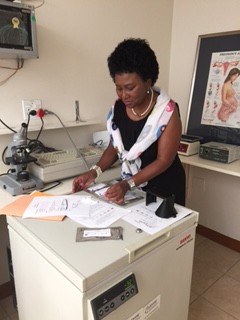
In 2008, Dr. Irina Buhimschi was working at Yale University and wanted to develop an innovative solution for early diagnosis of women with pre-eclampsia and eclampsia. “Pre-eclampsia is the most fascinating disease as its cause is unknown. Every scientist has a lifelong goal of solving the mystery of pre-eclampsia,” Buhimschi says.
The second leading global cause of maternal mortality is pre-eclampsia and eclampsia, or rapid rise of blood pressure during pregnancy, which can lead to seizures, kidney and liver damage, and death. Babies with mothers who have experienced pre-eclampsia or eclampsia are born prematurely and therefore have a greater risk of dying. Diagnosing preeclampsia in lower and middle income countries is challenging, especially due to the cost or inconclusive results of current screening or diagnostic tests. As a physician, Buhimschi realized that understanding pre-eclampsia could lead to a better understanding of pregnancy and an acknowledgment that the mom and baby are extremely complex. “We can research proteins and markers forever, but when it comes down to it the priority should be the people.” This outlook is what led Buhimschi to look for more effective ways to detect early cases of pre-eclampsia.
Existing diagnostic solutions are either expensive, lack accuracy, or are too complicated and therefore incompatible for widespread use in low and middle income countries. Buhimschi’s innovation started with a picture of red dots. The Congo Red Dot Test stands out for its simplicity and involves mixing red dye with urine and placing drops onto paper. If the dye spreads, it signifies the patient has pre-eclampsia. The simple, low-costing dye test currently has an accuracy rate of 86% and takes less than 3 minutes to complete. Due to its simplicity and higher accuracy, the Congo Red Dot Test has the ability to fill the need for cost-effective diagnostic tests for preeclampsia in low and middle income countries.
Buhimschi emphasizes the importance of partnership in this project. She met Wendy Davis - a Yale MBA student at the time - who developed the business plan, launched the startup company, GestVision and licensed the technology from Yale. Davis is now the CEO of GestVision and her business acumen has been crucial in commercializing the innovation. Combined with Buhimschi’s academic and scientific expertise, their partnership has led to much success.
GestVision partnered with Buhimschi who had secured a Saving Lives at Birth Transition to Scale Grant for the Congo Red Dot Test. The Saving Lives at Birth grant allowed for clinical studies in low and middle income countries using a new prototype based on lessons from prior versions of the test. In addition, GestVision secured a private investment with strategic partner, Cooper Surgical, which supports the commercial development of the test.
Buhimschi knows that funding to support the Congo Red Dot Test is one aspect, but support to develop and test it is another. “Without funding from USAID, this probably wouldn’t be the diagnostic that it is today. USAID’s role goes beyond that of financial support,” Buhimschi says. Through attending events like the Saving Lives at Birth DevelopmentXChange conference, she has been able to identify different priorities and understand what was needed in order for the project to succeed.







Comment
Make a general inquiry or suggest an improvement.